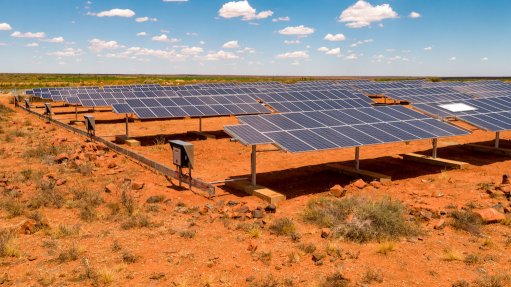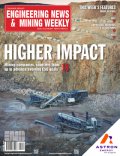Hoping For a Home Loan? Here’s How The Banks Assess Your Affordability
This article has been supplied as a media statement and is not written by Creamer Media. It may be available only for a limited time on this website.
The latest projections from the country’s leading economists indicate that interest rate cuts are finally on the horizon, predicting a 25-basis point cut following the Monetary Policy Committee’s meeting in September. But these cuts can’t come fast enough for the many South African homeowners who have found themselves struggling with affordability as the current elevated interest rate environment drags on.
“The prime lending rate has been raised by 450 basis points (4.50%) since the start of the rate hiking cycle – putting major pressure on homeowners and those looking to get into the property market,” shares Jackie Smith, Head of Buyers Trust, a safe and secure bank-hosted deposit solution for homebuyers.
“Significantly higher rates have meant significantly higher monthly home loan repayments – with some homeowners being unable to carry the additional costs. This has resulted in an unfortunate situation whereby a rising number of homeowners defaulting on their loans or having overdue balances,” she adds.
She shares those concerns around elevated rates have caused a percentage of would-be first-time homebuyers to delay their decision to purchase until the start of the interest rate-cutting cycle, in the hopes of benefiting from lower monthly instalments.
“While well-intentioned, timing your purchasing decision to align with rate cuts is a short-sighted strategy as rates can fluctuate drastically in just a few months,” Smith says. “Instead, focus on ensuring that your affordability is sufficient to afford both the upfront and long-term real costs of homeownership, building in a buffer to accommodate the possibility of higher repayments as a result of rate changes”.
“And, if you still wish to delay your decision to purchase to coincide with the start of the rate-cutting cycle, use this extra time to save for a deposit as this will be a major boost to your affordability when the time comes to review your home loan application,” she adds.
Factors that influence affordability
The country’s major banks, looking to avoid the risk of home loan defaults, employ strict criteria when reviewing applications to ensure that an applicant can actually afford to pay back what they’ve borrowed. This traditionally starts with a credit check, to determine whether you have a proven track record of repaying your debts in a timely manner and in full.
“Lenders will then conduct an affordability assessment, which checks your gross monthly income against your net income (minus deductions) and estimated total monthly expenses. From this, your net monthly surplus income is used to determine the total home loan amount you qualify for and what your monthly instalments will be,” explains Smith.
“The majority of banks follow the mandate set out by the National Credit Act, that the maximum monthly instalment cannot exceed 30% of your gross monthly salary,” she adds. “However, all applications are assessed on a case-by-case basis, with some banks also taking future income, such as salary increases or future rental income (in cases where the application is for a buy-to-let property) into account.”
Smith further recommends performing an accurate and realistic cash flow assessment on your own before even approaching a bank or bond originator with your home loan application. “You need to factor in all your monthly expenses and gather any supporting documentation to prove your income – honesty is important here as your application will be declined if the banks suspect that any of your information has been falsified.”
Deposits as a major affordability boost
Once an accurate affordability assessment has been performed, Smith cautions would-be homebuyers not to overstretch themselves by taking the maximum home loan amount offered to them. “Stick to your original budget, with monthly instalment figures that still offer some wiggle room should any additional expenses crop up. This will minimise the risk of loan defaults and ensure that your property investment is sustainable long-term.”
Putting down a deposit is another way to prove to the banks that you take the financial responsibility of homeownership seriously, while also lowering your risk profile.
“The higher your deposit, the lower your monthly instalments and often the interest rate the banks will offer you on your loan. This is because you’ve lowered your loan-to-value ratio by proving your ability to repay a sizeable portion of what the property is worth,” says Smith.
She shares that South African first-time homebuyers are becoming increasingly savvy by recognising the value of a large deposit in boosting their affordability, with the average deposit size for this market segment now at 10.9% of the purchase price - a 12.4% year-on-year increase.
“Once you’ve saved enough for a sizeable deposit, you can further maximise the financial rewards of this option by entrusting it to the Buyers Trust platform. Buyers Trust operates as a free bank guarantee – usually a significant cost for the buyer – until the transfer process is complete, while also offering a competitive investment return and the highest level of cybersecurity assurance,” she concludes.
Comments
Press Office
Announcements
What's On
Subscribe to improve your user experience...
Option 1 (equivalent of R125 a month):
Receive a weekly copy of Creamer Media's Engineering News & Mining Weekly magazine
(print copy for those in South Africa and e-magazine for those outside of South Africa)
Receive daily email newsletters
Access to full search results
Access archive of magazine back copies
Access to Projects in Progress
Access to ONE Research Report of your choice in PDF format
Option 2 (equivalent of R375 a month):
All benefits from Option 1
PLUS
Access to Creamer Media's Research Channel Africa for ALL Research Reports, in PDF format, on various industrial and mining sectors
including Electricity; Water; Energy Transition; Hydrogen; Roads, Rail and Ports; Coal; Gold; Platinum; Battery Metals; etc.
Already a subscriber?
Forgotten your password?
Receive weekly copy of Creamer Media's Engineering News & Mining Weekly magazine (print copy for those in South Africa and e-magazine for those outside of South Africa)
➕
Recieve daily email newsletters
➕
Access to full search results
➕
Access archive of magazine back copies
➕
Access to Projects in Progress
➕
Access to ONE Research Report of your choice in PDF format
RESEARCH CHANNEL AFRICA
R4500 (equivalent of R375 a month)
SUBSCRIBEAll benefits from Option 1
➕
Access to Creamer Media's Research Channel Africa for ALL Research Reports on various industrial and mining sectors, in PDF format, including on:
Electricity
➕
Water
➕
Energy Transition
➕
Hydrogen
➕
Roads, Rail and Ports
➕
Coal
➕
Gold
➕
Platinum
➕
Battery Metals
➕
etc.
Receive all benefits from Option 1 or Option 2 delivered to numerous people at your company
➕
Multiple User names and Passwords for simultaneous log-ins
➕
Intranet integration access to all in your organisation


















